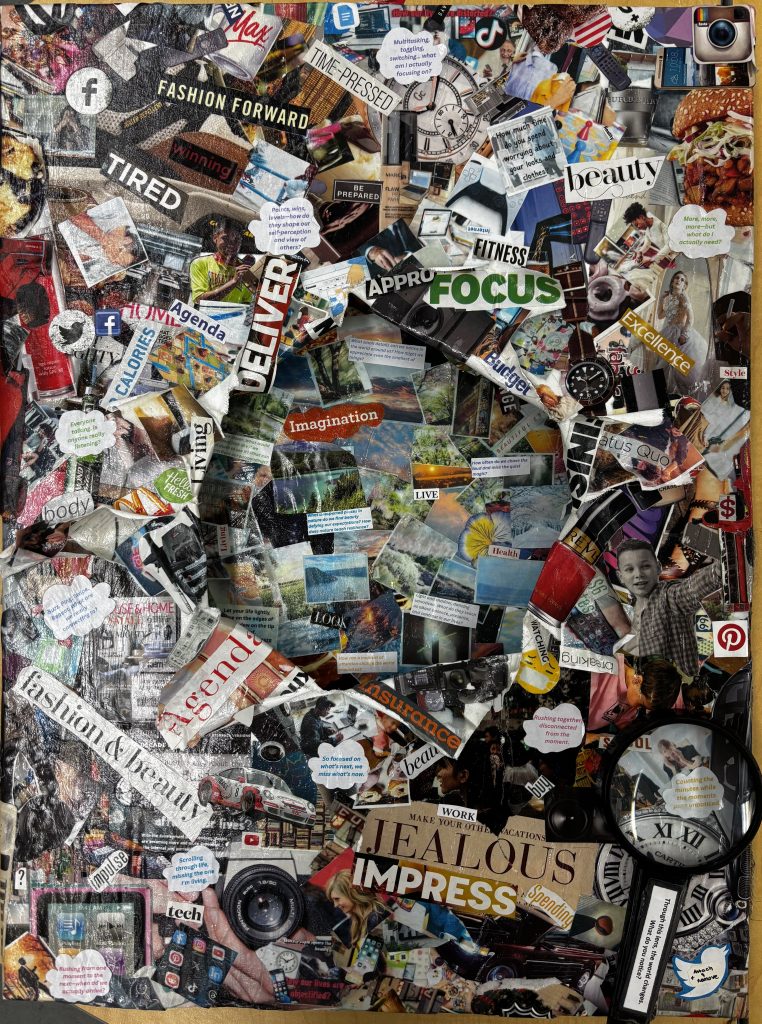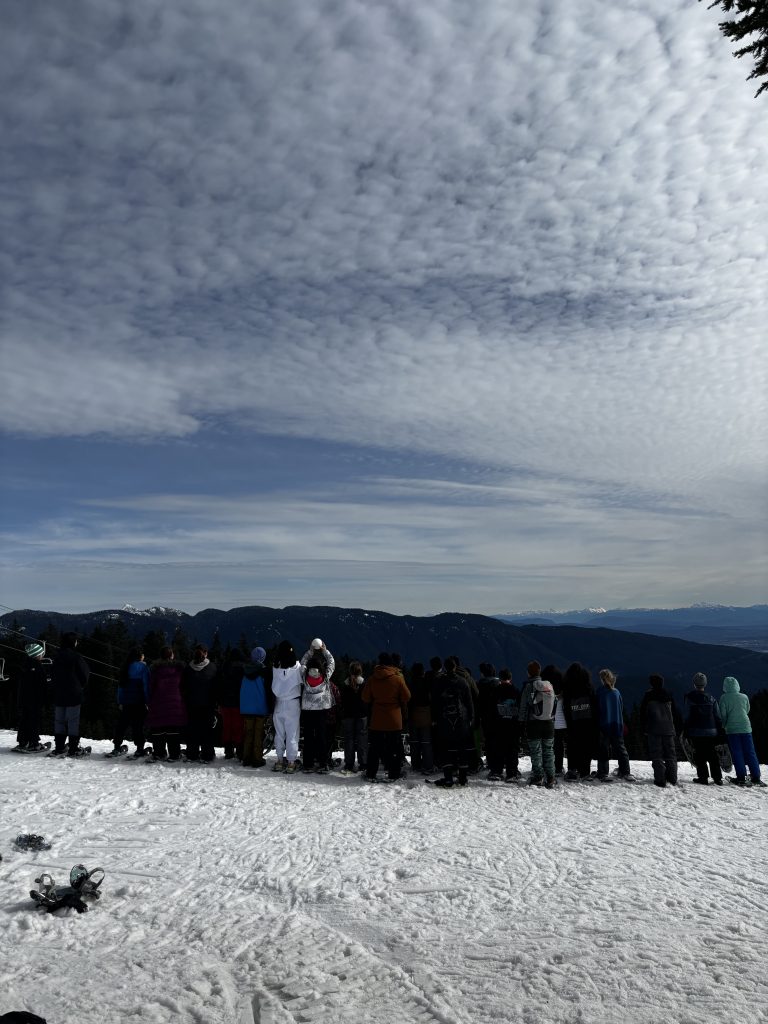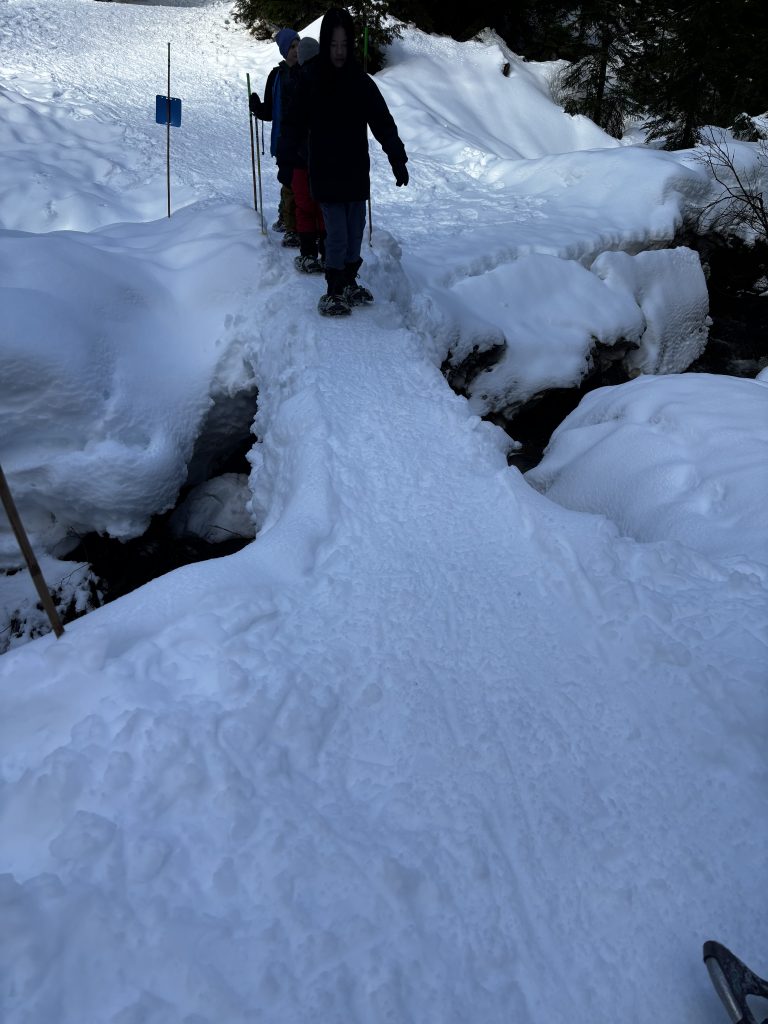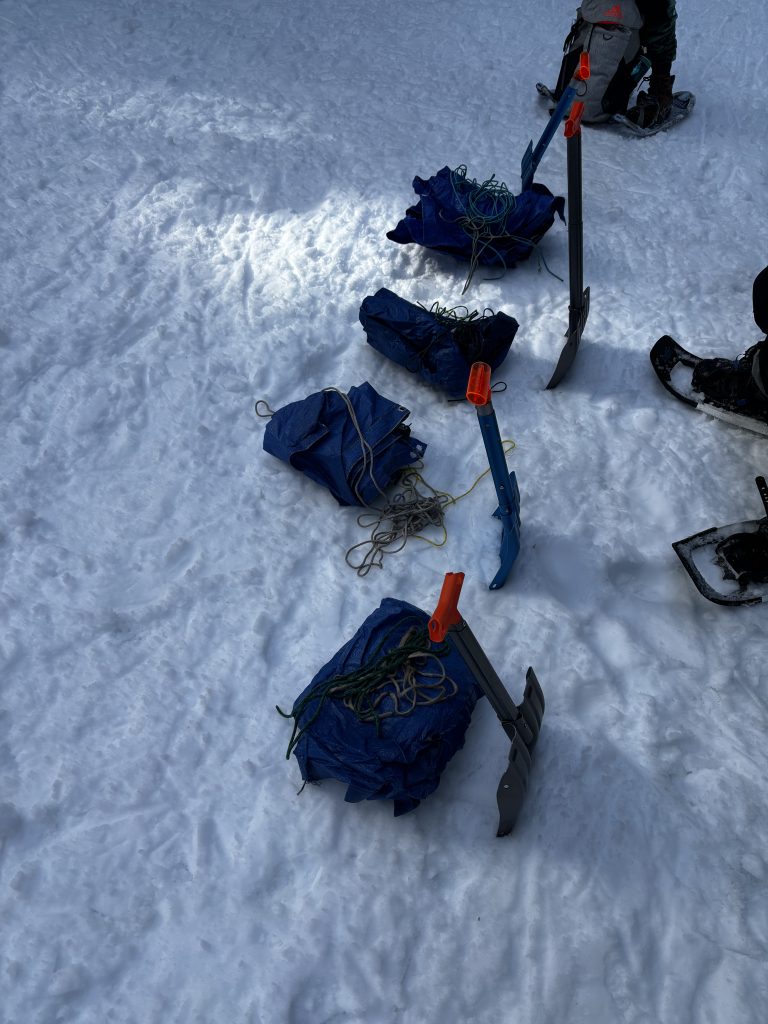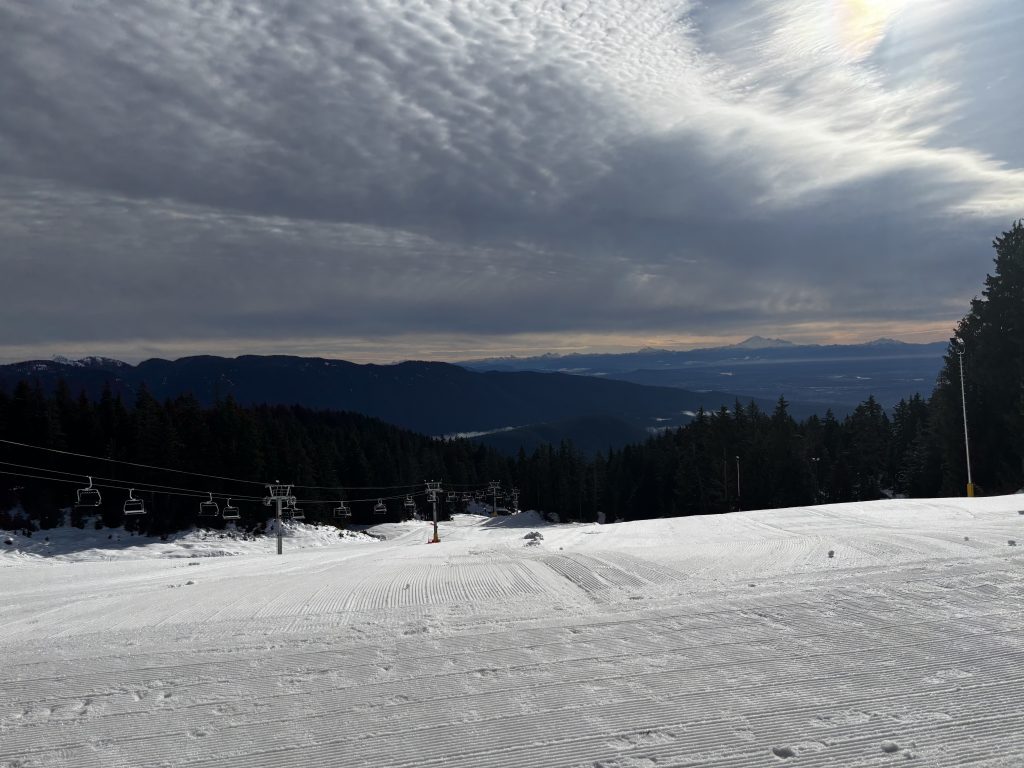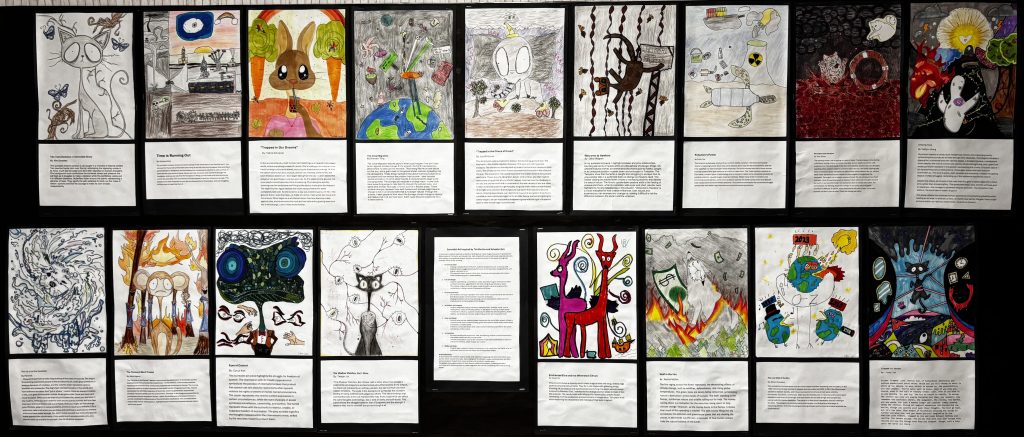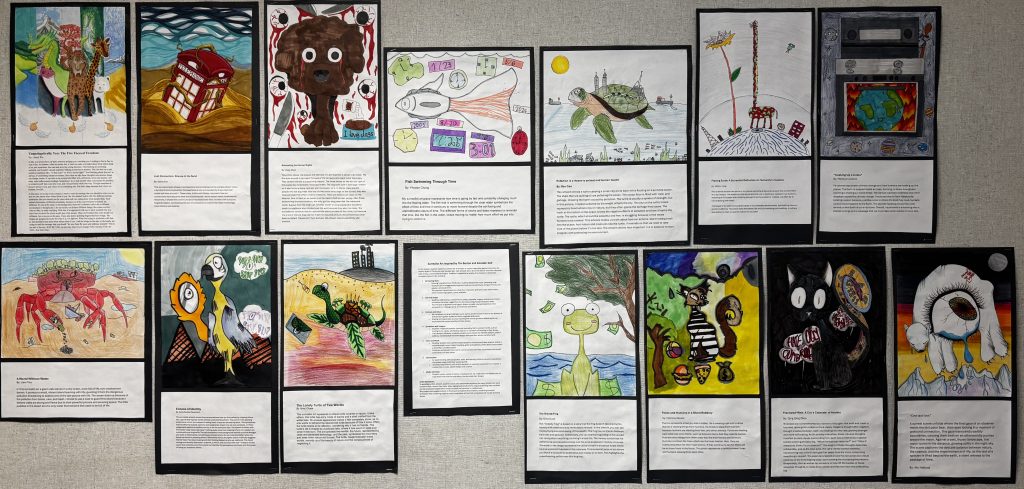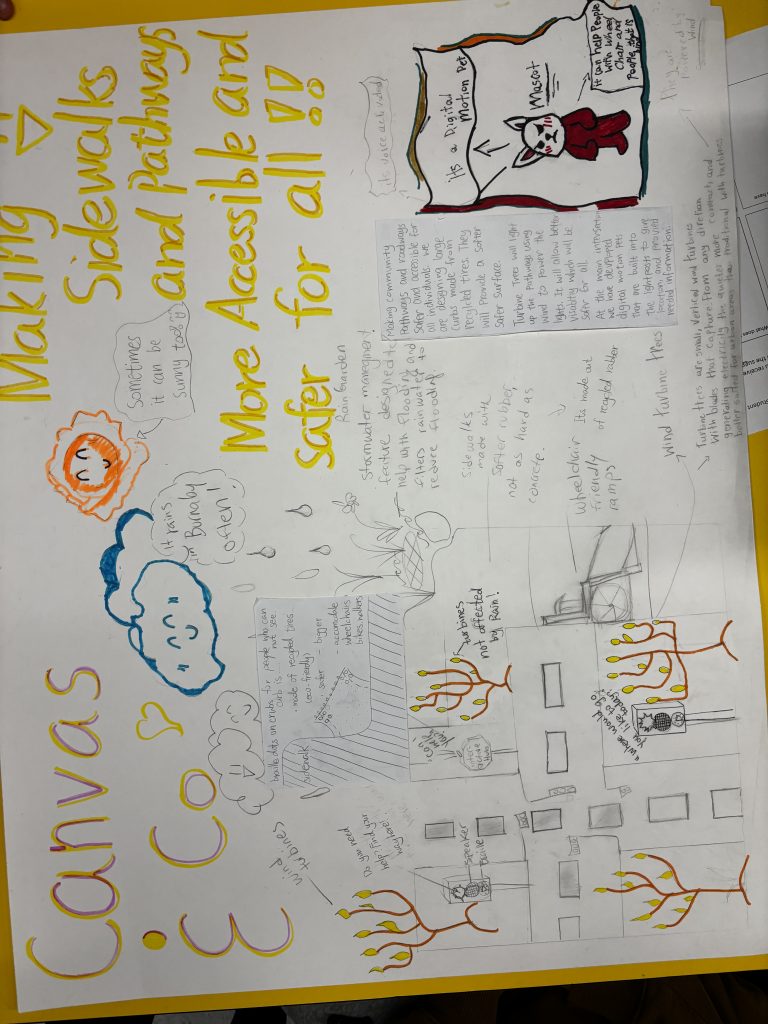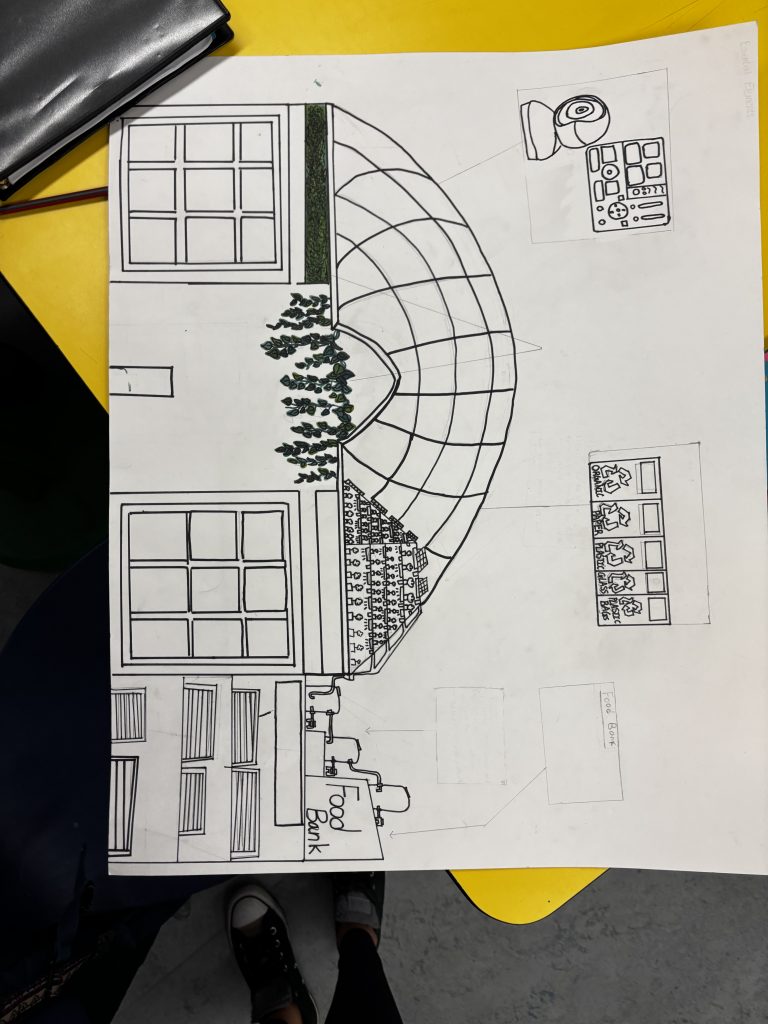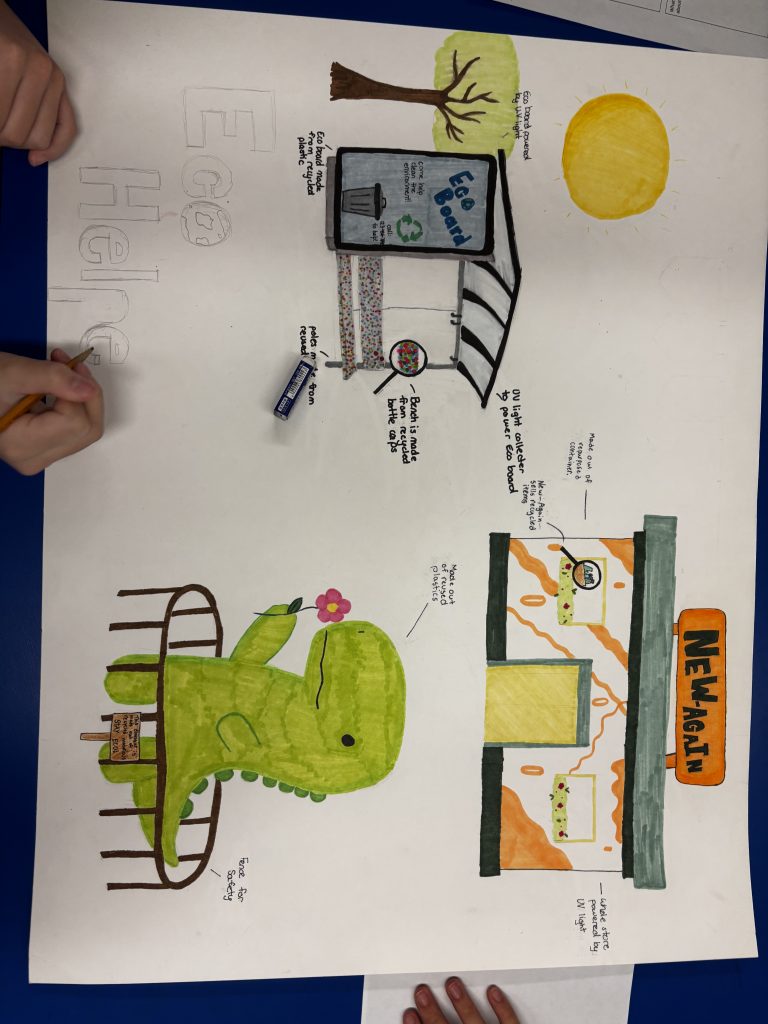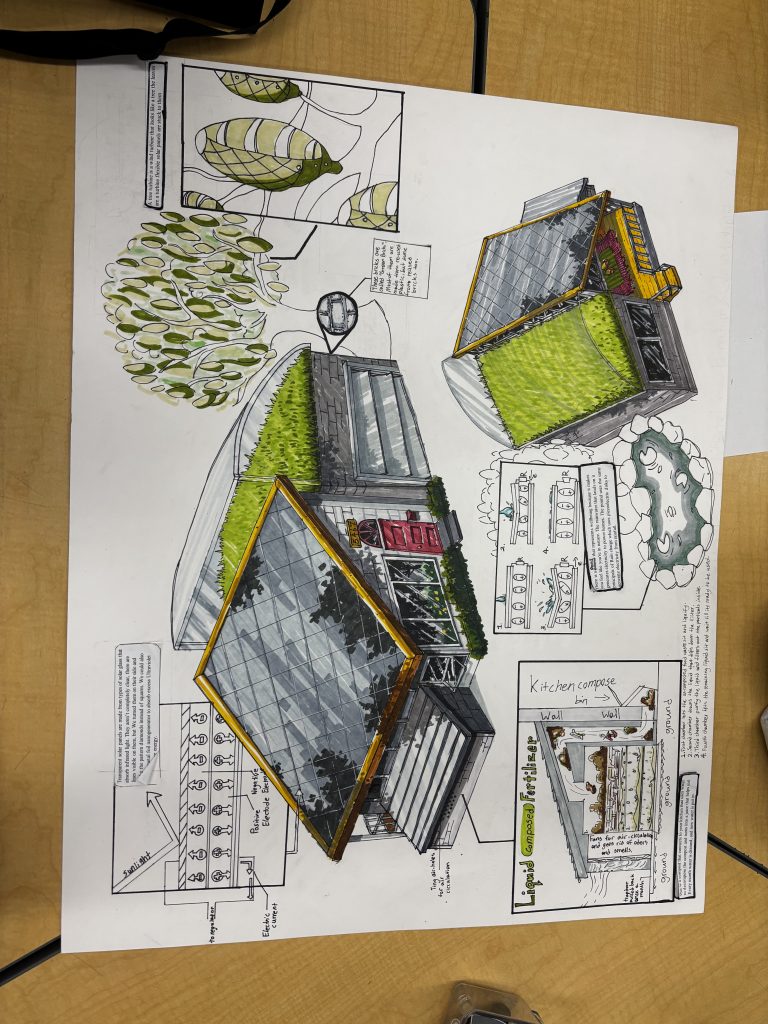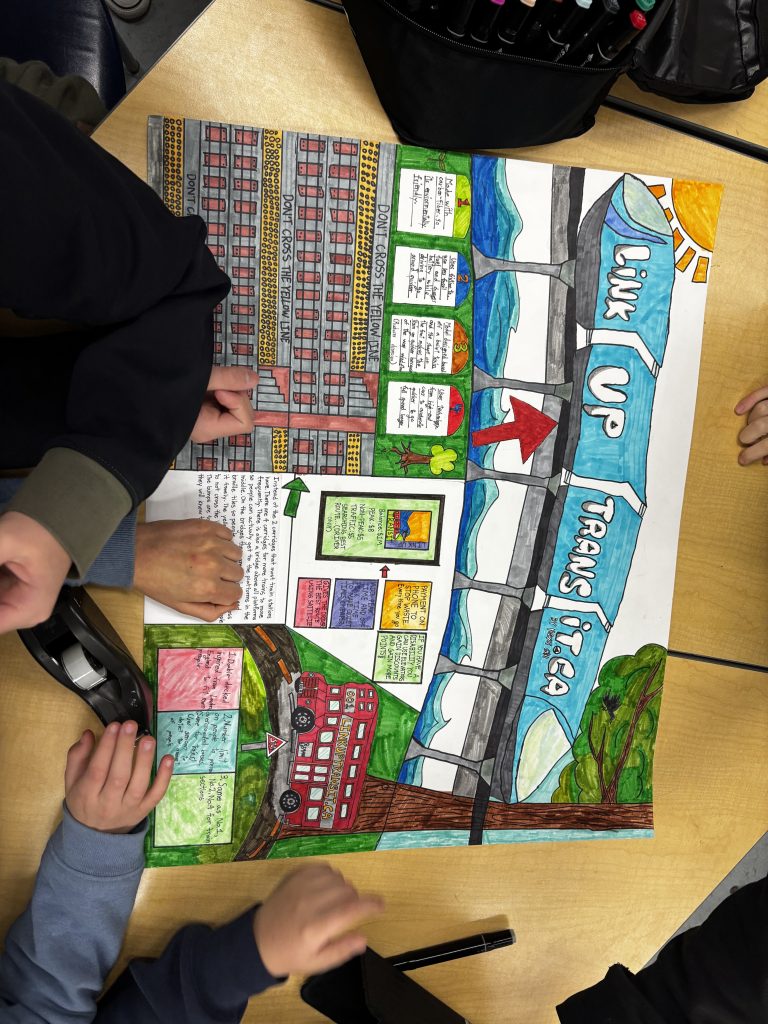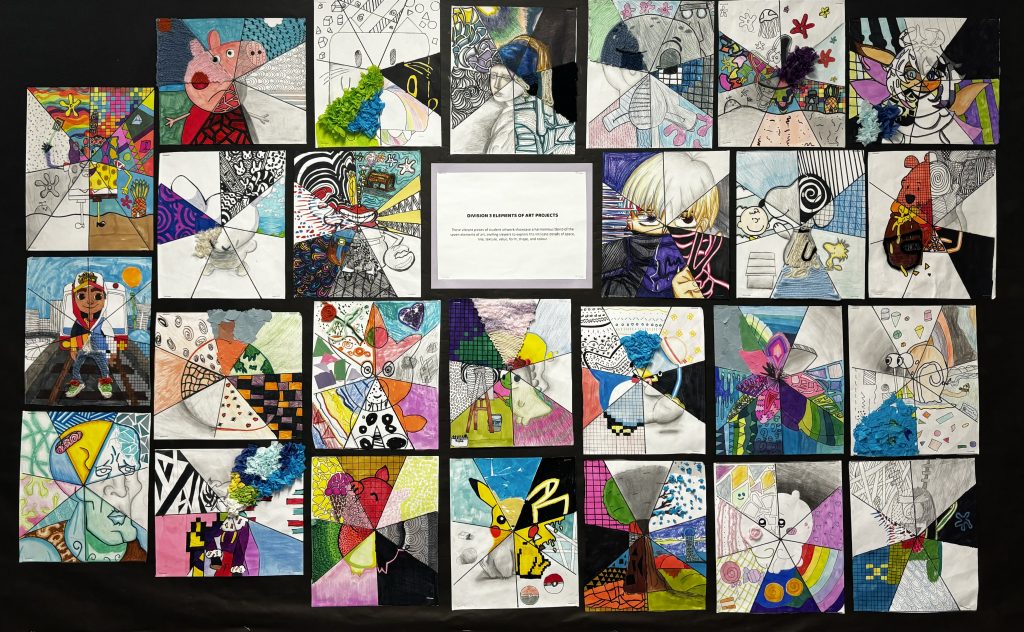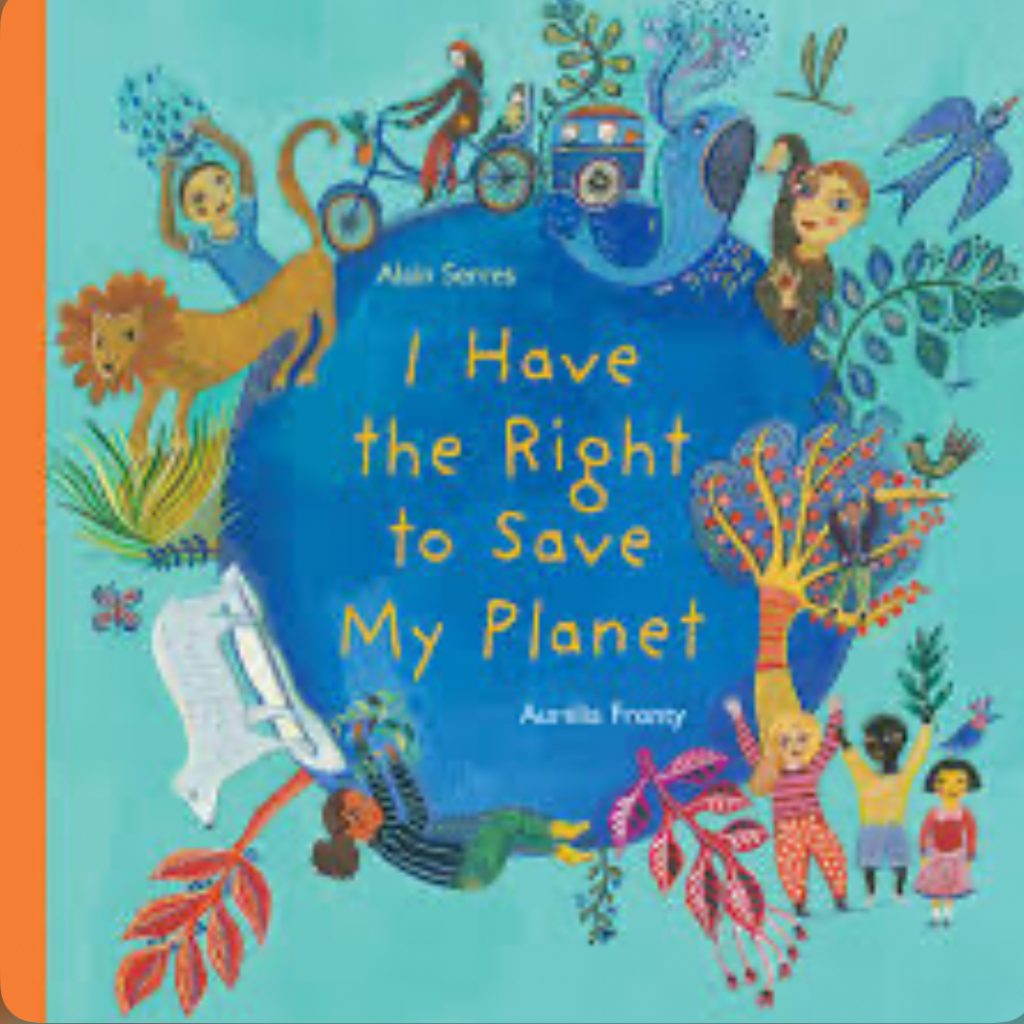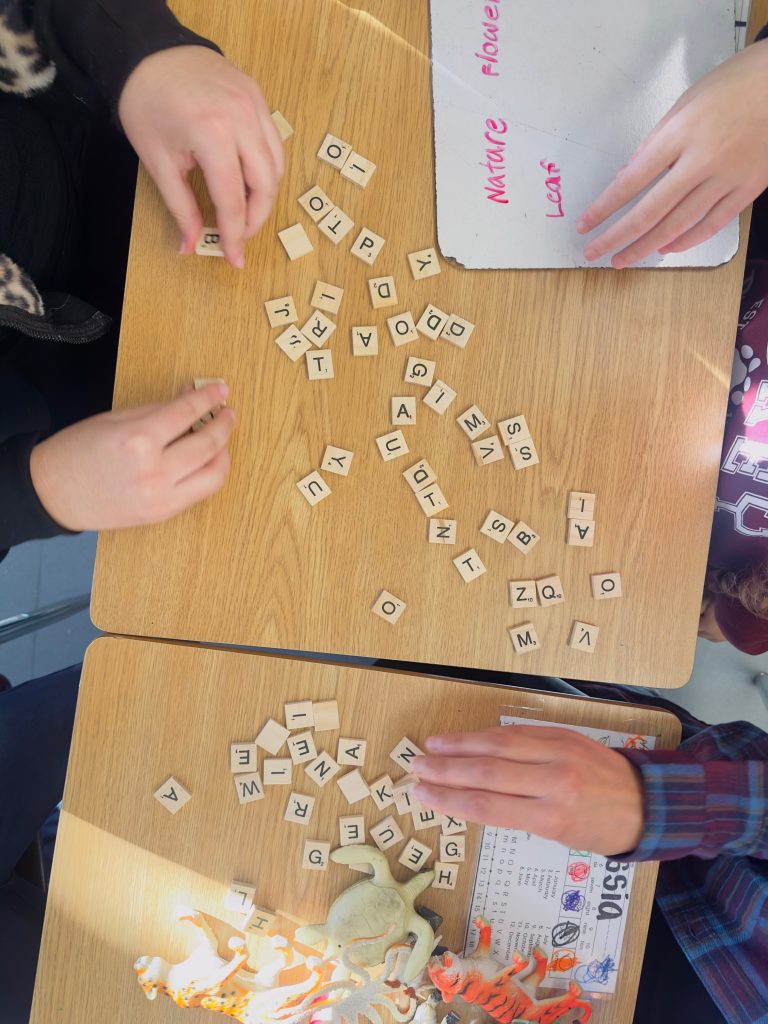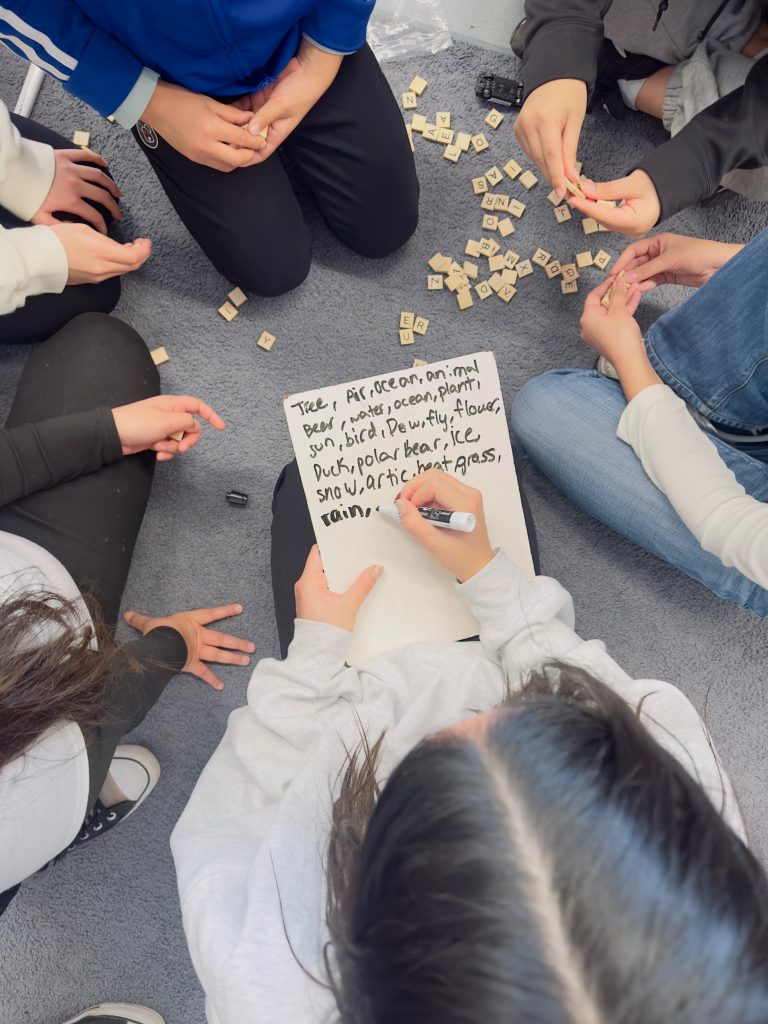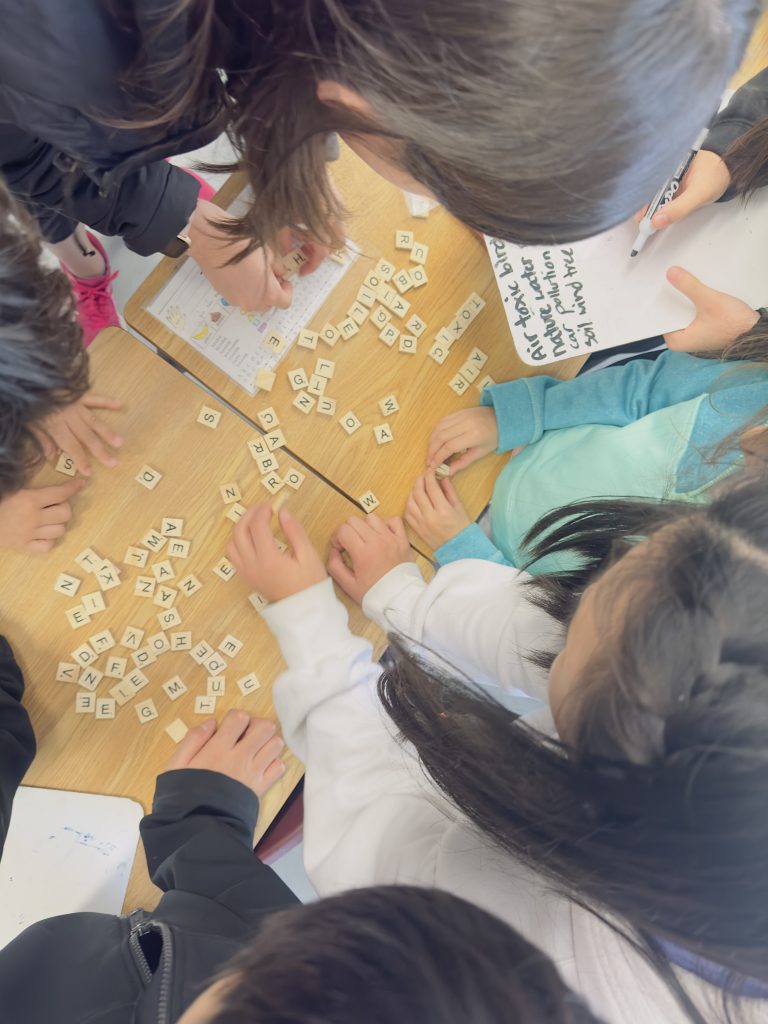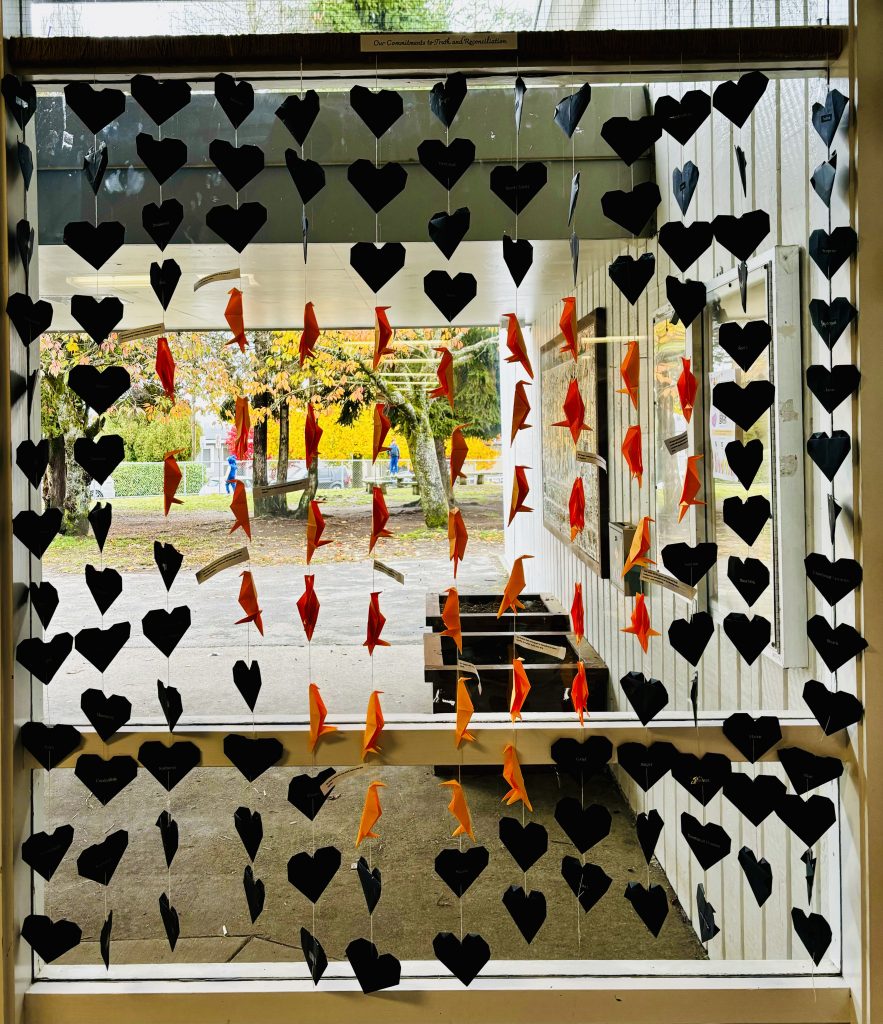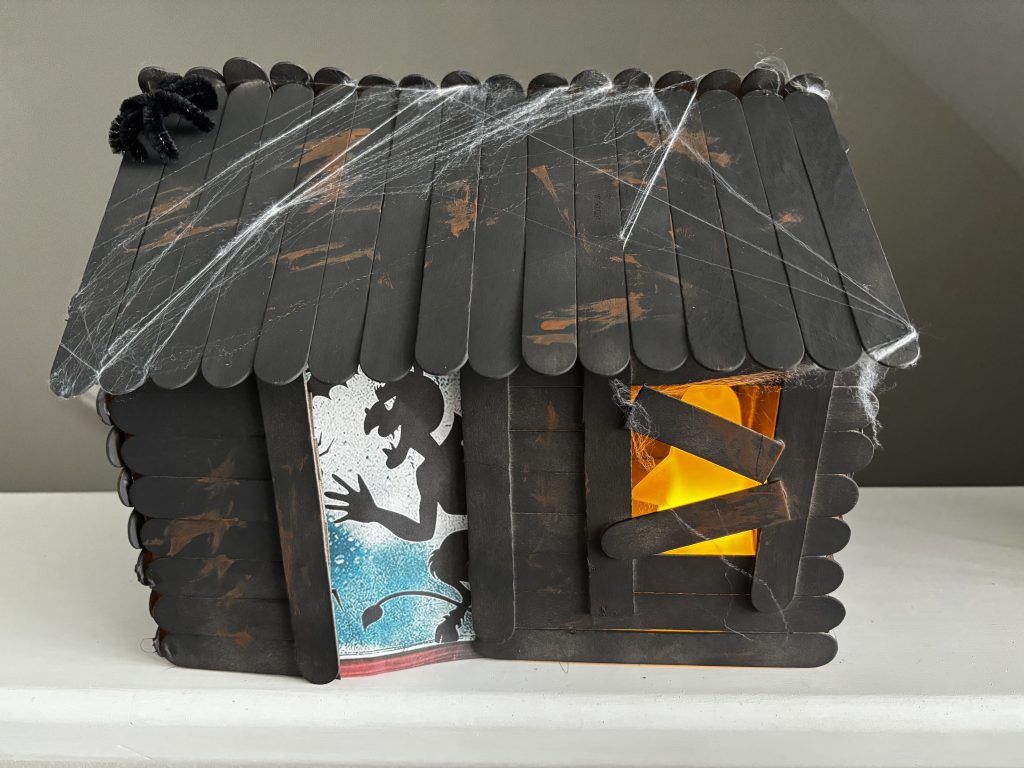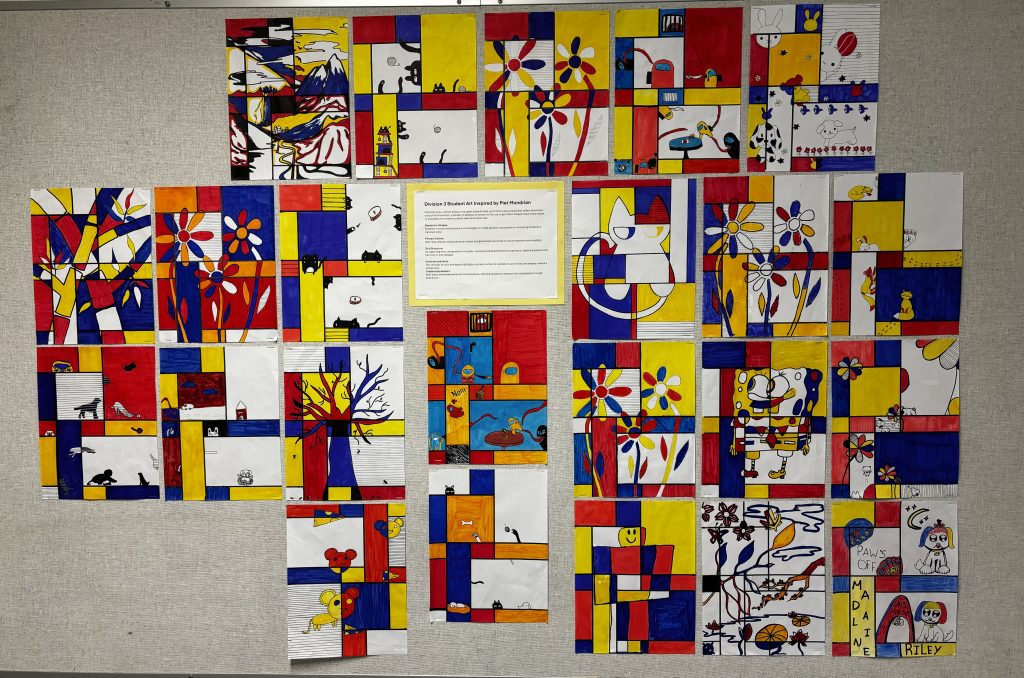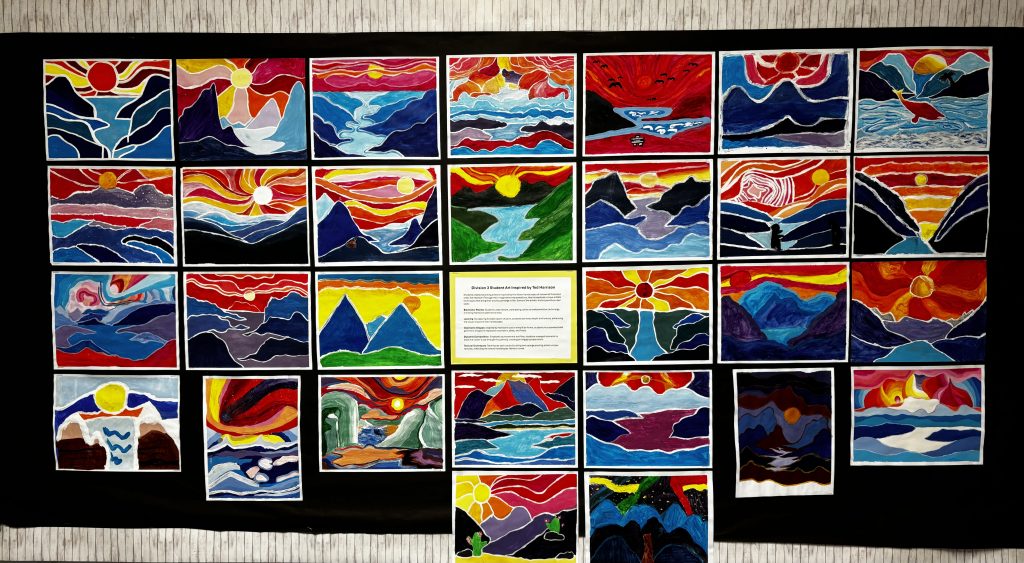I’m excited to share that our students artwork, The Art of Noticing, will be featured in the upcoming Arts Alive exhibit at the Burnaby Art Gallery, running from May 2 to June 1. This exhibit showcases a diverse range of art created by students from schools across our district, and I encourage families to visit and see their creativity on display!
The Art of Noticing is inspired by the idea of truly appreciating the small details in life, a concept explored in the Awesomeology episode of the Ologies podcast. Often, we rush through our busy lives, missing the subtle beauty that surrounds us. Through their artwork, students invite you to pause, take a closer look, and discover the hidden wonders that are right in front of us.
The artwork features an upper layer made of textured, layered media, representing the distractions of everyday life. A hole torn through this layer reveals a collection of photographs and reflective texts, offering a glimpse into the deeper moments that we often overlook. From the veins of a leaf to the beauty of a raindrop on a window, these small details are paired with thought-provoking text, encouraging reflection on their significance.
A magnifying glass allows viewers to engage with the art and invites the viewer to take a deeper look to uncover these hidden gems and notice the richness and beauty beneath the surface. This artwork serves as a reminder that, when we take the time to look closely, we can find meaning and wonder in even the smallest aspects of life.
Hopefully you get an opportunity to visit the Arts Alive exhibit so you can see this unique project and celebrate the creativity of our students and others throughout our district!
